Carl Zeiss Jena Werra series

After World War II the famous German camera company Carl Zeiss was split into 2: a West German company based in the city of Stuttgart, and a company known as Carl Zeiss Jena based in the East German city of Jena. Initially Carl Zeiss Jena concentrated mainly on making lenses, but they also made some camera systems of their own unique design. One of those was the Werra series of cameras.
The Werra series of cameras was launched in 1954 and was manufactured until 1967. Over that period there were 4 generations of cameras:
First generation
The first generation consisted of a single camera, launched in 1954, known simply as the Carl Zeiss Jena Werra. It set the basic formula of all Werra cameras to follow. It was a fairly simple all manual camera with a fixed lens, no light meter and scale focussing. The shutter speed and aperture dials, focussing ring and a totally unique twisting film advance mechanism, surrounded the lens. The camera came with a combined lens cover and lens cap that could be reversed to form a lens hood. When the lens cover and cap was mounted on the lens ready for storage or carrying almost all the controls were hidden to give the camera a unique minimalist design. Had the Bauhaus design school ever built a camera this is what it would have looked like I'm sure!
Second generation
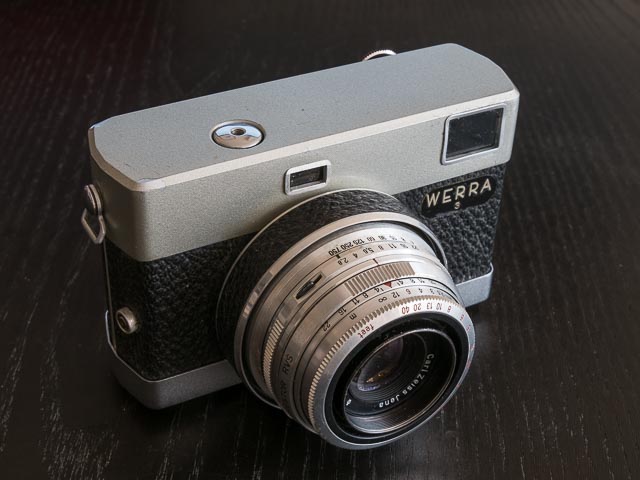
The original Werra was a very successful camera for Carl Zeiss Jena, so it didn't take them long to introduce a second generation of cameras in 1955. The second generation refined the styling of the original Werra a little, but kept the same flat top design. The big change is that range was expanded to 4 cameras:
- Werra I
- This camera was essentially a replacement for the first generation Werra. Like that camera it was a simple all manual camera with a fixed lens, no light meter and scale focussing.
- Werra II
- The Werra II took the spec of the Werra 1 and added an uncoupled selenium cell light meter.
- Werra III
- The Werra III also took the Werra I as its starting point but this time added partially interchangeable lenses and a sophisticated viewfinder with frame-lines for all 3 of the available Werra lenses (35, 50 and 100mm) and an integrated coupled rangefinder to help with focussing. For me this is the best looking camera of the whole series. Without the light meter of the Werra I and IV and without the accessory shoe of the later generation of cameras is keeps the super minimalist looks of the original Werra, but with the added advantage of interchangeable lenses and a rangefinder.
- Werra IV
- This camera took the Werra III and added the uncoupled light meter from the Werra II.
Third generation
The third generation of Werra cameras refined the flat top design of the first two generations of cameras with a smooth, rounded design for the top plate. Also, a new top-of-the-range model was added;
- Werra V
- This camera took the Werra IV specification and replaced the uncoupled light meter with a more sphisicated coupled light meter. Also, a mirror in the corner of the viewfinder allowed the photographer to see the aperture and shutter speed.
Towards the end the third generation two new models were introduced:
- Werra Mat
- The Werra Mat was essentially a Werra II with the uncoupled light meter replaced by a coupled lightmeter.
- Werra Matic
- The Werra Matic replaced the short lived Werra 5 model. Like the Werra 5 and the Werra Mat it has the more sophisticated coupled light meter.
Fourth generation

The main change for the 4th generation was an updated cosmetic design with metallic stripes added to the front of the camera. This may have been more modern but it lacked the minimal purity of the earlier cameras. Carl Zeiss Jena also added a cold accessory shoe to the top plate across the entire camera range which was very useful, but this spoiled the minimalist design even further.
My Carl Zeiss Jena Werra system
Werra III outfit
My first Werra camera came in the form of a complete outfit consisting of a camera, all 3 lenses (35, 50 and 100mm) plus a set of cases, lens caps and lens hoods. Unfortunately the camera didn't work, but I decided to keep it anyway as it seems to be quite rare.
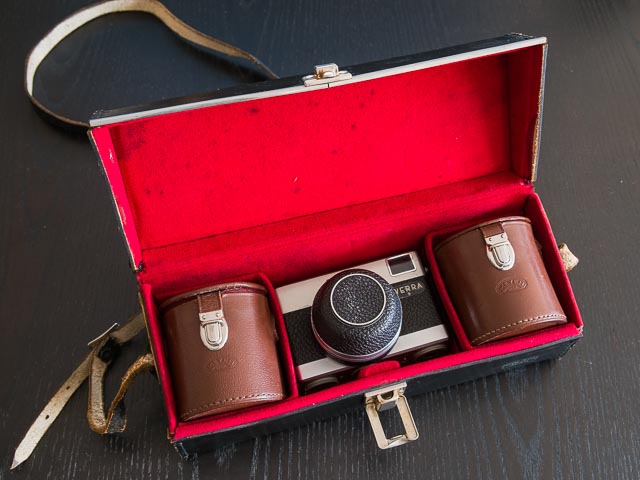
Werra III outfit in outfit case

Entire Werra III outfit including 35, 50 and 100mm lenses, cases, lens hoods and lens caps

Werra III with Carl Zeiss Jena Tessar 50mm f/2.8

Werra III with Carl Zeiss Jena Tessar 50mm f/2.8 unmounted

Werra III with Carl Zeiss Jena Tessar 50mm f/2.8 and lens cover mounted as a lens hood

Werra III with Carl Zeiss Jena Tessar 50mm f/2.8 and lens cover and lens cap in place for storage/carrying
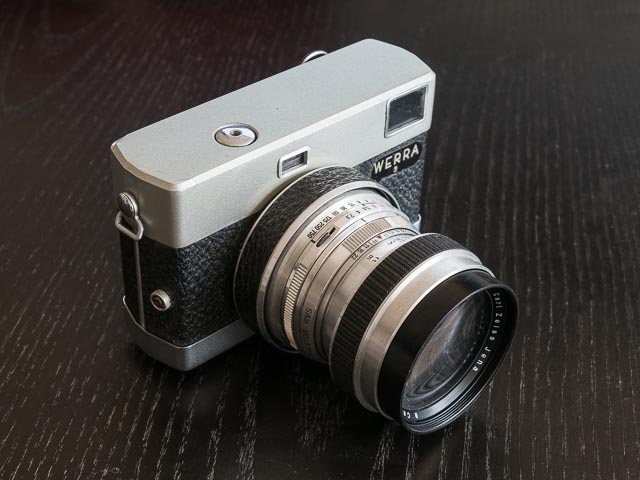
Werra III with Carl Zeiss Jena Flektagon 35mm f/2.8

Werra III with Carl Zeiss Jena Cardinar 100mm f/4

Werra III bottom
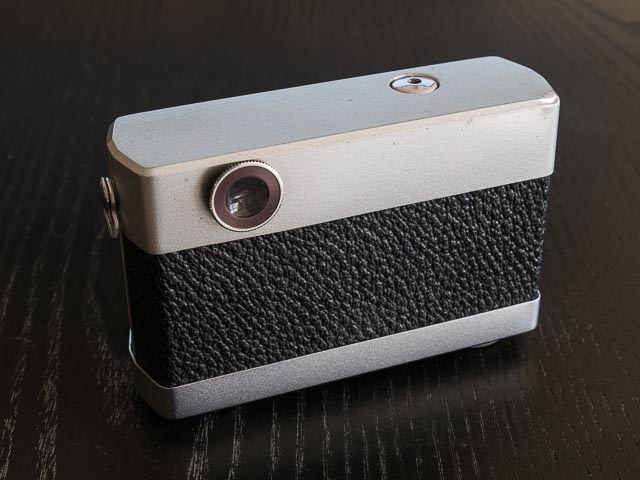
Werra III back
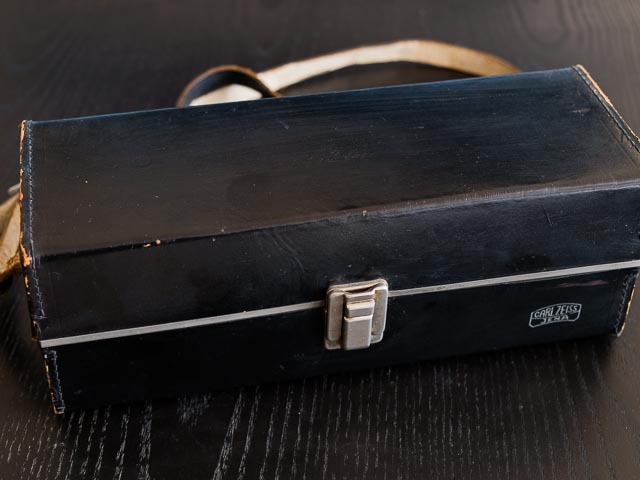
Werra outfit case
Werra Matic
So when it turned out the camera that came with my Werra III outfit didn't work the hunt was on for a Werra camera that did work to go with the lenses. It took a while, but eventually I found this top-of-the-line Werra Matic. Mind you, I haven't actually got around to running a film through my Werra Matic yet, but I will eventually!

Werra Matic with Carl Zeiss Jena Tessar 50mm f/2.8

Werra Matic with lens cover and lens cap ready for storage/carrying
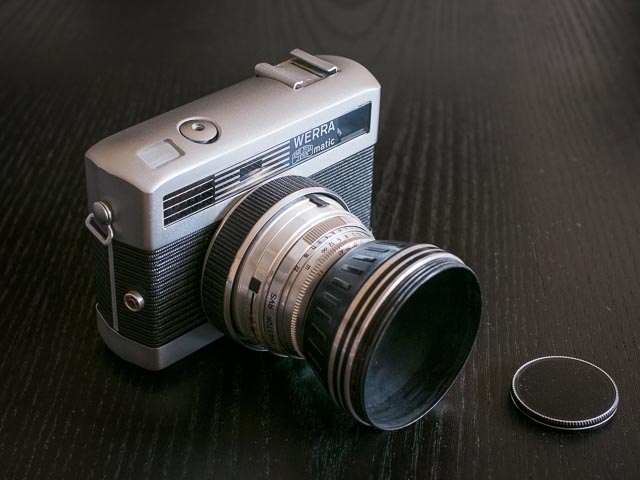
Werra Matic with lens cover mounted as a lens hood

Werra Matic with Carl Zeiss Jena Tessar 50mm f/2.8 unmounted
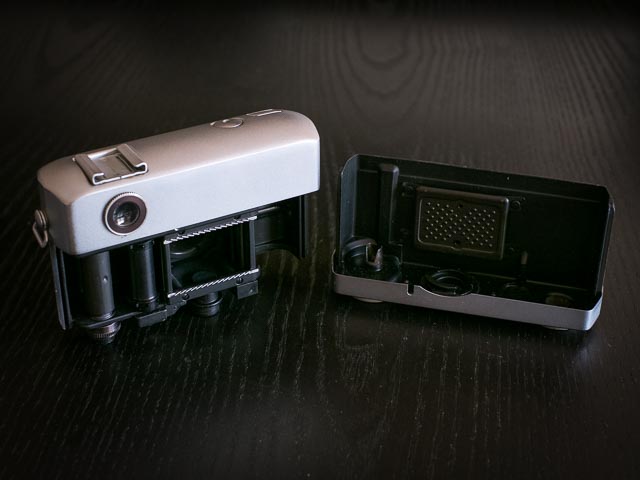
Werra Matic with film back removed
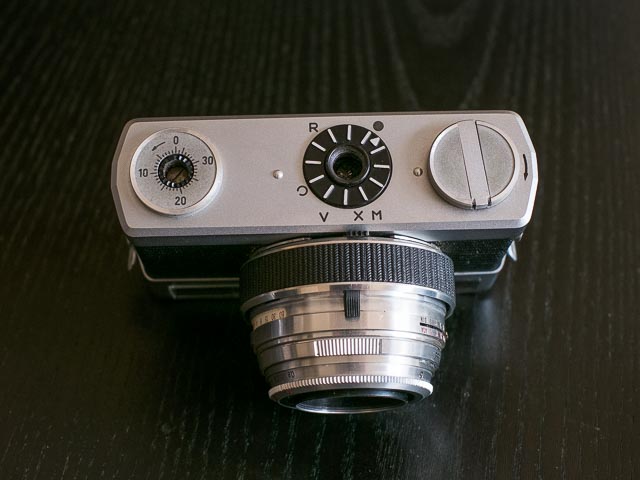
Werra Matic bottom

Werra Matic logo

Werra Matic dials around the lens

Werra Matic with Carl Zeiss Jena Tessar 50mm f/2.8, Cardinar 100mm f/4 and Flektagon 35mm f/2.8 lens mounted
Links
- Instruction manual for the second/third generation Werra I-IV, Werra Mat and Werra Matic models on butkus.org
- Instruction manual for the second/third generation Werra I-V, Werra Mat and Werra Matic models on butkus.org
- Instruction manual for the forth generation Werra I-3, Werra Mat and Werra Matic models on butkus.org